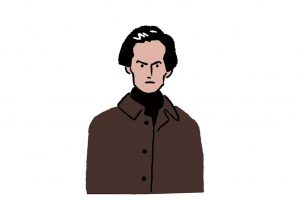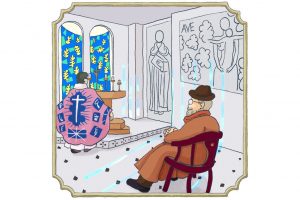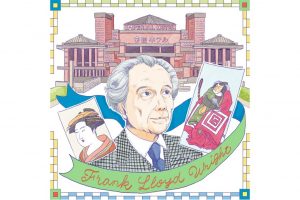Curry and rice—catalyst for his directorial debut
One day while working as a film assistant at Kamata Studio, Ozu was waiting in the studio’s cafeteria for their curry and rice to be served. When a dish was first served to the director who came in after him, Ozu found himself yelling, “I was here first!” Ozu later recounted that the studio head caught wind of this incident and impressed him Ozu was an interesting guy. It was the catalyst for his being promoted the following month to direct the period drama Sword of Penitence (Zange no yaiba, 1927).
Yasujiro Ozu
Examining artists
No.025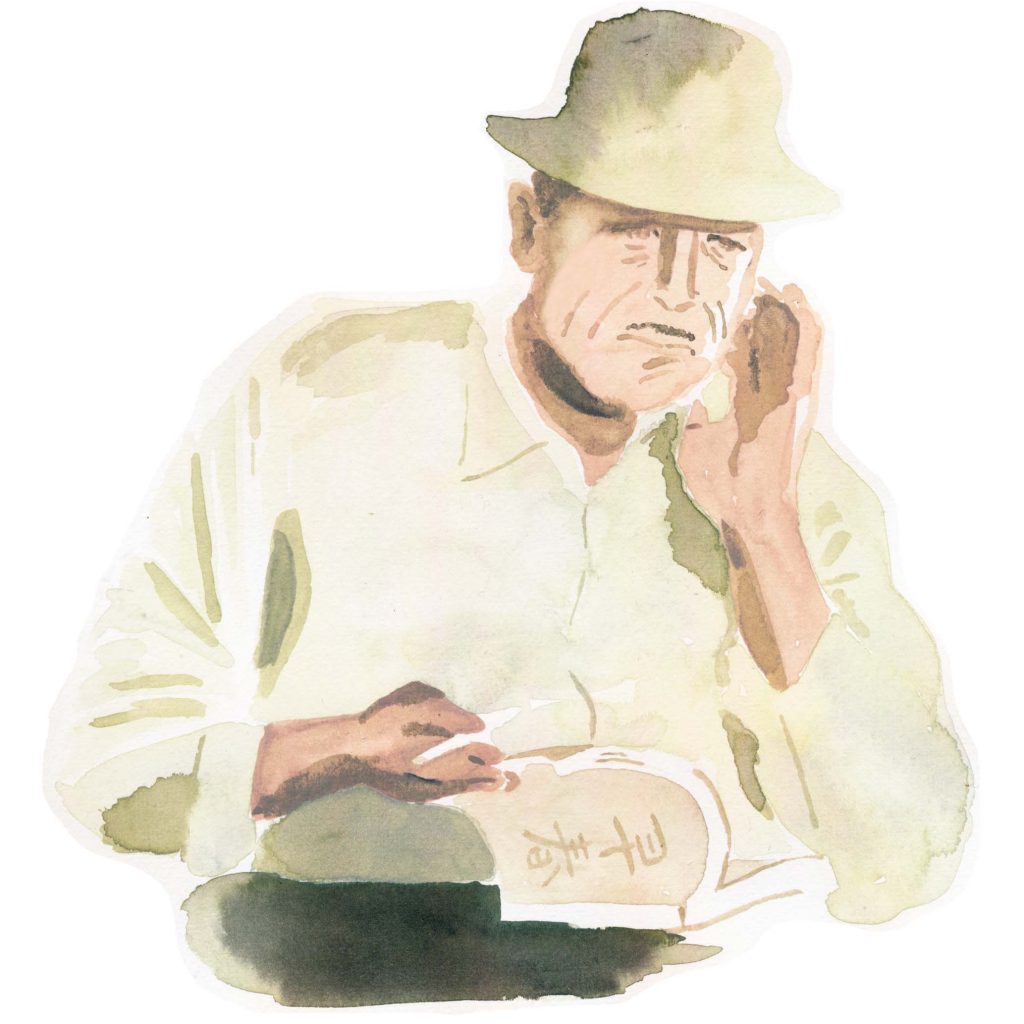
Yasujiro Ozu was a film director who consistently depicted the evolvement of Japanese families. His movies are grounded in his own aesthetic sense regarded as “Ozu-cho” (Ozu tone), and are characterized by compositions shot from low camera angles and quiet dialog. This column will discuss this filmmaker who had many uncompromising particularities.
Illustration: Sora Toyoshima
Yasujiro Ozu (1903-1963)
Born 1903 in Tokyo. Ozu joined Kamata Film Studio of Shochiku Cinema in 1923 as a film assistant, and debuted as a film director in 1927 with Sword of Penitence (Zange no yaiba). After World War II, he released more movies including Late Spring (Banshun, 1949) and Early Summer (Bakushu, 1951). His 1953 film Tokyo Story (Tokyo Monogatari, 1953) won the Sutherland Trophy at the 1958 London Film Festival, bringing Ozu into the international spotlight.
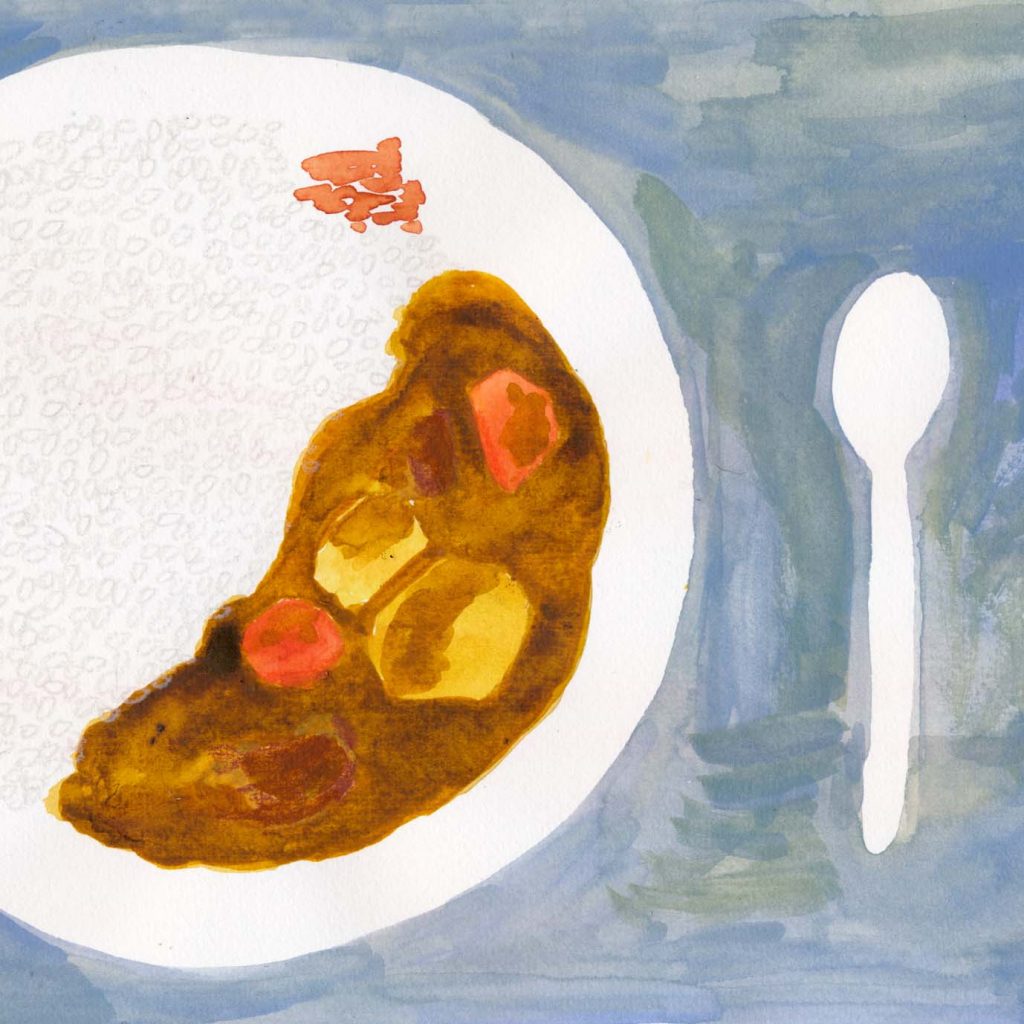
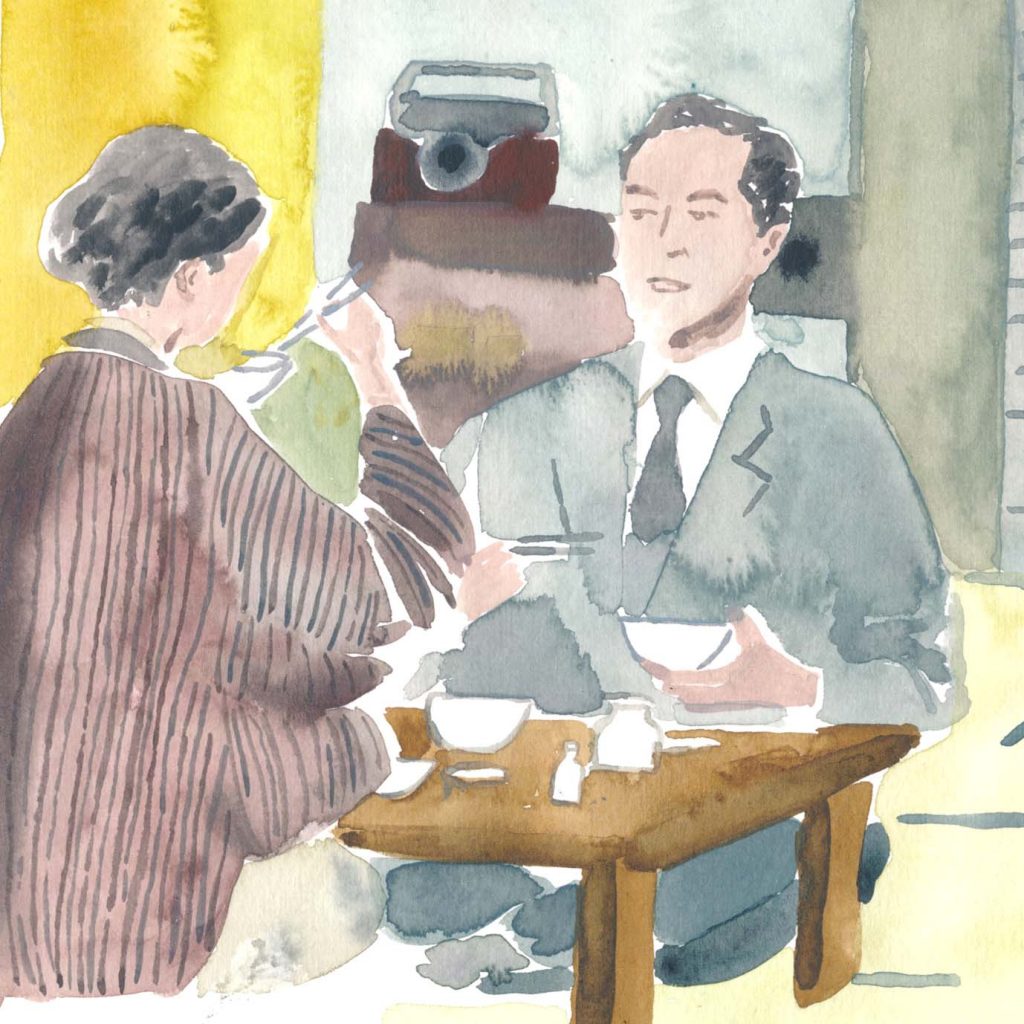
Insistence on a low position
“Low position,” which is where Ozu would hold his camera, became synonymous to Ozu’s filmmaking style. He also preferred to have the stories play out in indoor sets rather than in outdoor locations. To accommodate the compositions viewed from a low position, he used every possible types of ingenuity. For example, he was extremely particular about the positions of props, and built a set with a long hallway in order to emphasize depth. On the other hand, when it came to music, he showed that he was not very picky.
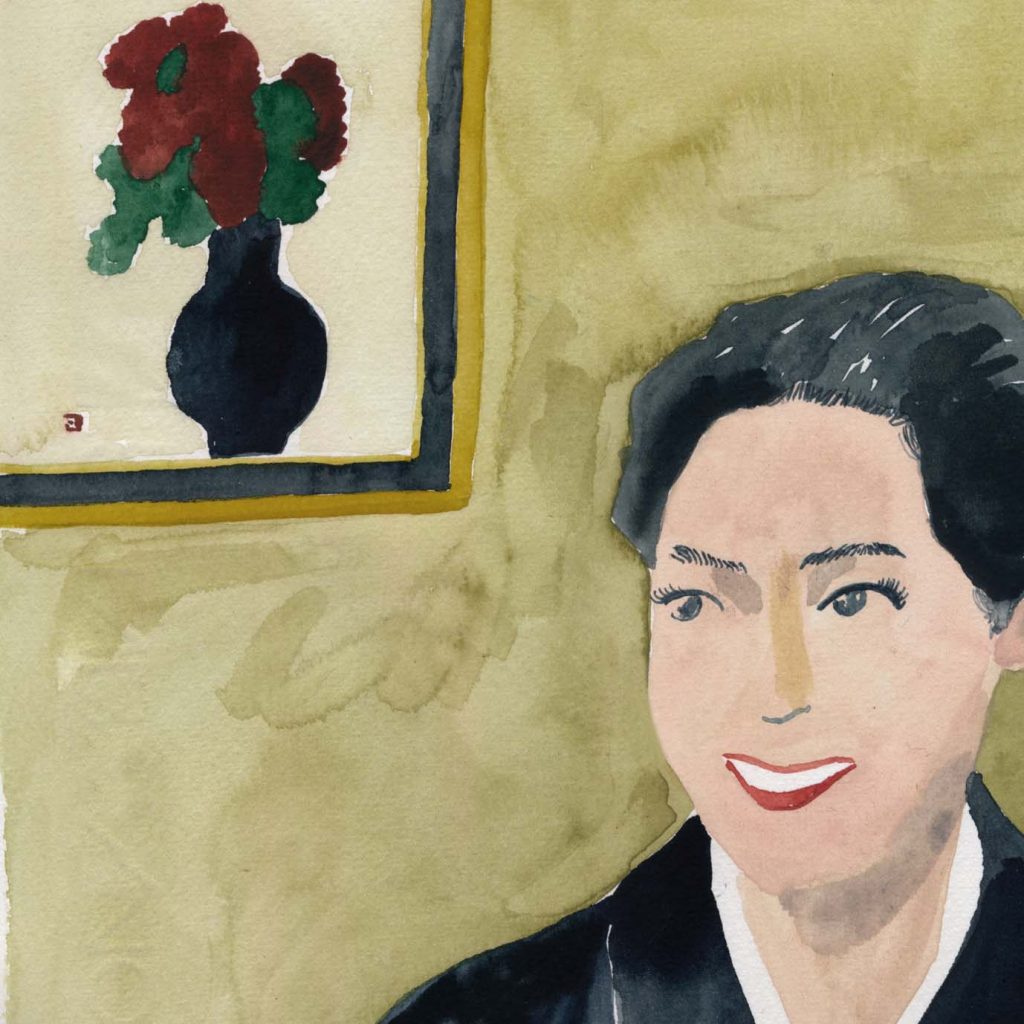
Inclination for authenticity and art
Regarding art pieces that appeared in the films, they were mere props, he still insisted on authenticity. A film in which the largest number of paintings appears is Late Autumn (Akibiyori, 1960), which is about a daughter who is of a marrying age. In addition to the painting Asama-yama (Mt. Asama) by Ryuzaburo Umehara hung on the wall of a restaurant, works by Kaii Higashiyama, Meiji Hashimoto, and Gyoshu Hayami enliven the various scenes. The film is a masterpiece that have continued to be adored by Japanese as well as overseas viewers to this day. <End>
Japanese original text: Yoichiro Takemi
Sora Toyoshima
Illustrator. Born 1980 in Ibaraki Prefecture. Graduated from PALETTE CLUB SCHOOL.
Works with both Japanese and overseas clients, mainly in areas of magazine, advertisement, websites, and apparels.
http://soratoyoshima.net


